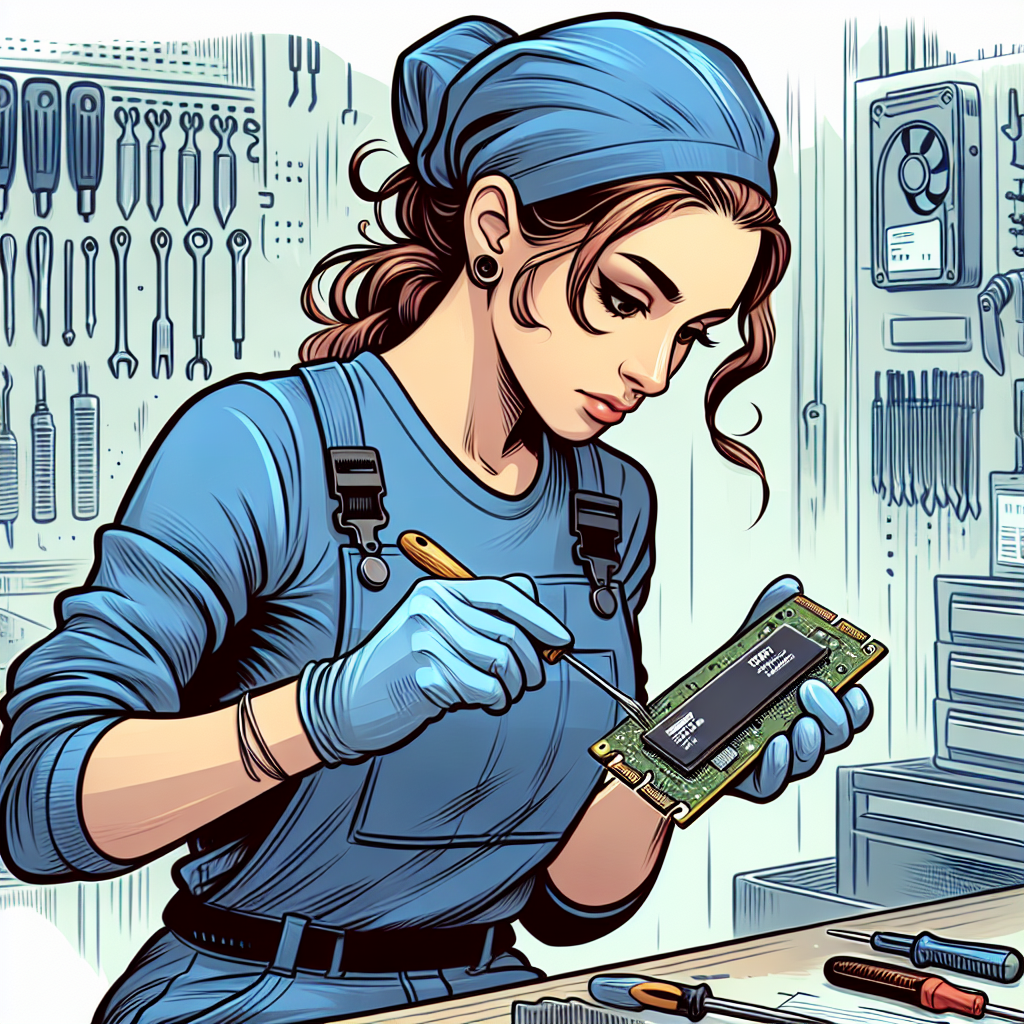Introduction
M.2 Solid State Drives (SSDs) have become a popular choice for modern computing due to their speed and compact form factor. However, encountering a situation where your M.2 SSD isn’t recognized by your system can be both frustrating and concerning, especially when it contains important data. This article explores the potential reasons behind an unrecognized M.2 SSD and provides step-by-step guides on how to retrieve data from such a device.
Understanding M.2 SSDs
Before diving into data retrieval methods, it’s essential to understand what M.2 SSDs are and how they function. M.2 is a form factor specification for SSDs, offering faster data transfer speeds and more efficient storage compared to traditional SATA-based SSDs. They connect directly to the motherboard via the M.2 slot, providing a streamlined and high-performance storage solution.
Reasons Why an M.2 SSD May Not Be Recognized
Several factors can cause an M.2 SSD to become unrecognized by your system:
- Connection Issues: Physical connection problems, such as loose or improperly seated SSDs, can prevent recognition.
- Driver Problems: Outdated or corrupted drivers can interfere with the SSD’s communication with the system.
- Hardware Failures: SSDs can experience hardware failures due to wear and tear, power surges, or manufacturing defects.
- Firmware Issues: Incompatible or outdated firmware may cause the system to fail to recognize the SSD.
- Compatibility Problems: Not all M.2 SSDs are compatible with every motherboard, leading to recognition issues.
Troubleshooting Steps to Recognize Your M.2 SSD
Before attempting data recovery, it’s essential to troubleshoot and attempt to make the SSD recognizable again.
Check Physical Connections
Ensure that the SSD is properly connected to the M.2 slot. Power off your computer, remove the SSD, and reinsert it firmly. Inspect the SSD and the slot for any visible damage.
Update or Reinstall Drivers
Navigate to the Device Manager and check for driver updates related to storage controllers. If necessary, uninstall and reinstall the drivers to ensure they’re functioning correctly.
Use Disk Management Tools
Access the Disk Management utility to see if the SSD is listed. If it appears as uninitialized or offline, you might need to initialize it or assign it a drive letter.
Update SSD Firmware
Visit the SSD manufacturer’s website to check for firmware updates. Updating the firmware can resolve compatibility and stability issues.
Test on Another Device
To rule out motherboard or system-specific issues, try connecting the SSD to another compatible device. If it’s recognized elsewhere, the problem may lie with your original system.
Data Recovery Options for Unrecognized M.2 SSDs
If troubleshooting steps fail to recognize the SSD, consider the following data recovery options:
- Professional Data Recovery Services: Engaging a professional service is the most reliable way to retrieve data from a failing or unrecognized SSD. Professionals have specialized tools and expertise to recover data without causing further damage.
- DIY Data Recovery Software: Several software solutions can attempt to access data from unrecognized SSDs. Tools like EaseUS, Recuva, or Stellar Data Recovery can scan the drive and recover accessible files.
- Important Considerations for Data Recovery:
- Minimize Use: Avoid using the SSD to prevent overwriting lost data.
- Backup Regularly: Regular backups can prevent data loss in the event of hardware failures.
- Handle Carefully: SSDs are sensitive to physical shocks; handle them with care during the recovery process.
Preventive Measures to Avoid SSD Data Loss
To minimize the risk of encountering unrecognized SSDs and data loss:
- Regular Backups: Implement a regular backup routine to ensure your data is safe, even if the SSD fails.
- Proper Handling: Protect your SSD from physical damage by handling it carefully during installation or removal.
- Stable Power Supply: Use a reliable power source to protect against surges that can damage SSDs.
- Stay Updated: Keep your SSD’s firmware and system drivers updated to maintain compatibility and performance.
Conclusion
Encountering an unrecognized M.2 SSD can be daunting, but understanding the potential causes and available solutions can aid in effective data recovery. By following troubleshooting steps and considering both professional and DIY recovery options, you can maximize the chances of retrieving your valuable data. Additionally, implementing preventive measures can help safeguard against future SSD-related issues.

